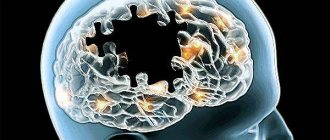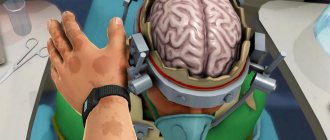In the modern world, vegetative-vascular dystonia in adolescents is becoming a common disease. Due to constant changes in the rhythm of life, stress at school and social adaptation, the child experiences many stressful situations, leading to problems with the nervous system. The consequence is the development of VSD and the deterioration of the child’s condition and productivity. Timely identification of signs and provision of specialized assistance will help to avoid such problems.
Causes of the disease
Vegetative vascular dystonia in adolescents is not a spontaneous phenomenon, but caused by a series of events that have a bad effect on the young body. An unhealthy lifestyle and addictions are the main causes of imbalance in the body. Causes of VSD in adolescents:
Enter your pressure
Move the sliders
120
on
80
- use of harmful substances;
- hormonal imbalance caused by transition;
- severe diseases, mainly infectious;
- sedentary lifestyle;
- overwork while studying;
- injuries received;
- nervous system disorders;
- stress, of various origins;
- genetics.
In adolescent children, emotional overloads caused by age-related changes in the psyche, which make teenagers sensitive to environmental factors, become frequent companions. Conflict situations at school or in the family circle, the harmful effects of harmful addictions and other factors can have a detrimental effect on the growing body and fragile nervous system.
In girls, physical development outpaces the maturation of the nervous system, which leads to disturbances in well-being.
The causes of VSD in girls are directly related to their excessive emotionality. Girls are more likely to experience anxiety about criticism from others, the worry is caused by the opinions of others, quarrels with a boyfriend or girlfriends. Stressful situations lead teenage girls to severe nervous tension, which, against the background of hormonal changes, becomes a lever for the development of VSD.
In guys, the characteristics of VSD are associated with rapid puberty, which leads the body to excessive stress, causing the heart to work harder. Guys incorporate bad habits into their lives earlier, which also provokes the development of VSD in adolescence. Young athletes whose muscle mass develops faster due to sports are at risk.
Prevention of vegetative-vascular dystonia in children and adolescents
Vegetative-vascular dystonia in adolescents and young children can be practically asymptomatic, especially if adults pay due attention to the prevention of VSD.
We are talking about leading a healthy lifestyle, playing sports at both an amateur and professional level, diet, as well as sleep and wakefulness. For better vascular condition, it is necessary to diversify your diet by adding more fiber and vitamins, as well as foods containing potassium and magnesium. But it is better to exclude fatty and fried foods or at least reduce their consumption to a minimum. The reason for avoiding thermally processed fats is the risk of developing atherosclerotic processes. Naturally, during this period it is best to increase the child’s time in the fresh air.
Symptoms of VSD in a teenager
Vegetative-vascular dystonia remains a problem that has not been fully studied. The disease leads to changes in the cardiovascular system, but these signs are considered to be secondary. The origins of the problem are associated with nervous overstrain of the body. Thanks to the nervous system, all organs of the body are regulated, so the symptoms of vegetative-vascular dystonia in children and adolescents are varied.
The most common symptoms are:
- blood pressure surges;
- bipolar emotional swings;
- heart pain;
- increased sweating;
- change in temperature of the extremities;
- cyclical headaches;
- change in skin color;
- digestive problems;
- dizziness, possible fainting;
- temperature jumps;
- sudden changes in appetite;
- fast fatiguability.
Against the background of hormonal changes and rapid body growth, guys are faced with symptoms of VSD.
Boys are dominated by painful symptoms, girls are susceptible to psycho-emotional disorders. The psyche of adolescents during puberty is unstable, which affects their rapid emotional burnout. Easily vulnerable and emotionally unstable teenagers who are deeply worried about any reason become susceptible to VSD. The acute form of VSD in adolescence is characterized by a hypertensive crisis, a hypotensive crisis and a mixed type crisis. The main form of manifestation is hypotensive crisis.
Reasons for deviations
It is not always easy to determine why VSD appears in adolescents; the causes and symptoms differ from child to child. Usually the cause is a lag in the development of the peripheral nervous system from the growth of the body. It is based on disturbances in the functioning of the nervous and cardiovascular systems. Weak nerve impulses are formed, which has a negative effect on the functioning of blood vessels. The age when pronounced symptoms of VSD appear in a teenager is 14 years.
Causes of disorders
The main factors leading to VSD:
- changes in hormonal levels;
- lagging growth of the circulatory system and blood vessels from the growth of muscles and skeleton, leading to a deficiency of blood supply to organs;
- past infectious diseases;
- injuries;
- toxic effects of bad habits;
- stressful situations;
- heredity.
How dangerous is the disease?
Vegetative-vascular dystonia does not cause any particular harm to the body, but it affects the general condition of the teenager. The educational process causes a lot of anxiety in a teenager, which leads to stressful situations that provoke the development of VSD. There is a deterioration in the general condition of the body, which leads to problems at school, and this causes new nervous strains, which puts the teenager in a vicious circle. In especially rare cases, VSD can lead to the development of hypertension (hypertension develops at 30-35 years of age).
Principles of treatment of neurocirculatory dystonia in adolescents
Any drug treatment during puberty can affect the formation of a young body, so prescriptions should be made on an individual basis. Depending on the severity of the signs of VSD, this disorder should be treated initially without the use of pharmacological drugs.
Firstly, the rest and work schedule should be adjusted. The teenage period involves a lot of mental stress, passing exams and preparing for admission to higher education institutions, so the routine often gets lost. Attention should be paid to a full 8-hour sleep, a balanced diet containing all the necessary microelements and vitamins. Proper nutrition will prevent excess weight gain. Frequent walks in the fresh air have a beneficial effect on the cognitive functions of the brain.
You can also use herbal preparations. They should be divided into two main groups and used depending on the symptoms:
- tonics (tinctures, capsules of eleutherococcus, ginseng);
- sedatives (tablets of valerian, motherwort, sage).
Correction of cardiovascular system disorders may include the use of pharmacological drugs. To treat high or low blood pressure, medications from the corresponding groups are prescribed.
The problem with drug treatment in adolescents is due to the fact that most drugs are intended for adults and are rarely dosed for adolescents. There are a number of medications that are designed specifically for children aged 12 to 18 years. Their action is aimed at eliminating the symptoms of VSD in the optimal time frame.
An example of such an adapted remedy is Eltacin. At its core, Eltacin is a drug consisting of three amino acids that are normally found in the body of a teenager. The drug exhibits a powerful antioxidant effect, reduces the need of cells for oxygen, thus correcting the manifestations of symptoms from the cardiovascular system. Eltacin increases a teenager’s performance and ability to learn, absorb new material, and reduces signs of fatigue and exhaustion.
Eltacin improves the emotional state, balancing age-related mood swings, and increases the child’s ability to socially adapt. With this drug you can treat chronic heart diseases and disorders of the autonomic nervous system in children from 11 to 18 years old. The natural composition of Eltacin eliminates the possibility of adverse reactions and overdose.
Read more here
Diagnostic measures
To exclude other serious diseases in adolescents, consultation with doctors is necessary.
The disease does not have clear signs by which it can be diagnosed, therefore all the patient’s complaints are clearly recorded and examined by doctors such as an endocrinologist, cardiologist, neurologist, and, if necessary, a psychotherapist gives an assessment of the condition. Genetic predisposition to the disease is also checked. Previous acute or chronic infectious diseases are identified. To diagnose VSD, use:
- electrocardiogram;
- Ultrasound of the thyroid gland;
- hormonal blood test;
- REG.
Reasons for the development of VSD in children
Among the causes of the disease in newborns are genetic predisposition, difficult labor in the mother, acute or chronic diseases of internal organs.
An incorrect daily routine is harmful. The absence of strict periods of sleep and wakefulness leads to lack of sleep, and the order of food intake is disrupted. This leads to absent-mindedness and constant fatigue.
Stressful situations at school and at home are dangerous. Heavy workload at school, conflicts with parents and classmates, and far-fetched complexes destabilize the nervous system. This is expressed in neuroses.
With insufficient physical activity, metabolic processes and body growth slow down, and hormonal levels are disrupted. If it is excessive, the load on the blood vessels increases. They develop more slowly than the skeleton and internal organs, which poses a risk for the occurrence of VSD.
Treatment of VSD
Treatment of VSD in adolescence includes an integrated approach to solving the problem. Several highly specialized doctors take part in the treatment, trying to provide the child with the necessary help and cope with the problem. In general, timely contact with a specialist allows you to make comforting prognoses for the treatment of VSD and allows you to avoid using drug treatment. However, VSD is treated in two ways: medicinal and non-medicinal.
Drugs (medicinal method)
Piracetam tablets are prescribed if symptoms of VSD are manifested by headaches and memory impairment.
Drug treatment is prescribed in extremely difficult cases of exacerbation of VSD in a teenager. Treatment is mainly aimed at restoring the nervous system, so sedatives based on valerian and other herbs are prescribed, and vitamin complexes are prescribed to maintain the balance of vitamins in the body. To balance the functions of the nervous system, nootropics are prescribed (Piracetam, Pantogam), and drugs that normalize blood pressure are prescribed without fail. In especially severe cases, they resort to the help of antidepressants.
Non-drug treatment
This type of treatment is most often used during VSD. Non-drug treatment includes different methods:
- Maintaining a daily routine. A teenager's sleep time should be at least 8-9 hours. Parents should properly organize their child’s work activities and limit the time spent at the computer or TV monitor.
- Regular exercise. Exercises should not be exhausting, so light sports such as cycling, walking in the fresh air, tennis are suitable.
- Proper balanced nutrition. During the period of active growth, the child needs the required amount of proteins, fats and carbohydrates. The consumption of spicy and smoked foods, drinks and foods that cause overstimulation of the nervous system is limited.
- Physiotherapeutic procedures.
- Phytotherapy. Herbal infusions are used to help calm the nervous system (lemon balm, chamomile).
Symptoms of dystonia
The first signs in boys and girls are observed at the age of six. When hormonal changes occur, VSD during puberty acquires a pathological course in a teenager.
According to ICD-10, dystonia has no classification and is not classified as an independent disease; it is characterized as a disorder in the functioning of the nervous and vascular systems.
There are several types of dystonia:
- Hypertensive. Blood pressure and heart rate increase. The teenager is worried about panic attacks and a state of overexcitement. Such phenomena are observed during physical activity and at rest.
- Hypotonic. Characterized by decreased blood pressure, increased fatigue, lethargy and apathy.
- Cardiac. Accompanied by disturbances in the functioning of the heart, arrhythmia and heartbeat irregularities.
- Mixed. The most severe form is when the child is alternately disturbed by changes in blood pressure, and the state of overexcitation is replaced by hyperinhibition.
Frequent manifestations of VSD
How do VSD symptoms manifest? In adolescents, symptoms of concomitant abnormalities:
- changes in body temperature, expressed as an increase or decrease for no apparent reason;
- increased sweating;
- freezing hands and feet;
- increased irritability and anxiety;
- digestive disorders;
- headache, fainting and dizziness;
- pallor, followed by flushes of blood to the face;
- arrhythmia, tachycardia and breathing difficulties.
Teenagers with signs of dystonia do not tolerate stressful situations, which are abundant at this age. Passing exams, communicating with peers, and conflicts with parents can intensify and aggravate the manifestation of symptoms. To normalize the child’s condition, you need to see a doctor and undergo examinations.
Dr. Komarovsky about VSD:
Symptoms of the pathological condition
It is quite difficult to visually notice the symptoms of VSD in adolescents. Children may have general complaints about deteriorating health. It is important to pay attention to these signs promptly.
Symptoms of vegetative-vascular dystonia in adolescents are as follows:
- feeling of heaviness in the chest;
- pain in the heart area;
- dizziness;
- shortness of breath, the child finds it difficult to breathe;
- increased heart rate;
- pressure changes;
- urinary disturbance;
- freezing of extremities;
- fainting conditions;
- frequent darkening of the eyes;
- urge to vomit;
- increased sweating;
- pulse instability;
- constipation, diarrhea;
- headache.
There is a chronic form of pathology, which passes more calmly. In some cases, an acute course of the condition in question is observed. The acute form is manifested by a vegetative-vascular crisis (panic attack). Adolescents experience the following symptoms:
- hysterics;
- acute attacks of anxiety;
- panic mood.
The difference between the chronic form is that it proceeds relatively unnoticed.
Sometimes VSD is observed during natural restructuring of the body; the teenager has no painful processes. In this case, only an increase in blood pressure to the levels of an adult is manifested. At the same time, the pulse rate decreases to the readings of adults. Such changes can cause autonomic dysfunction.
There are times when a child needs to be prescribed a therapeutic course. Treatment is required when the following signs appear:
- profuse sweating;
- sudden increase in temperature;
- manifestation of emotional instability;
- changes in complexion (redness, pallor).








